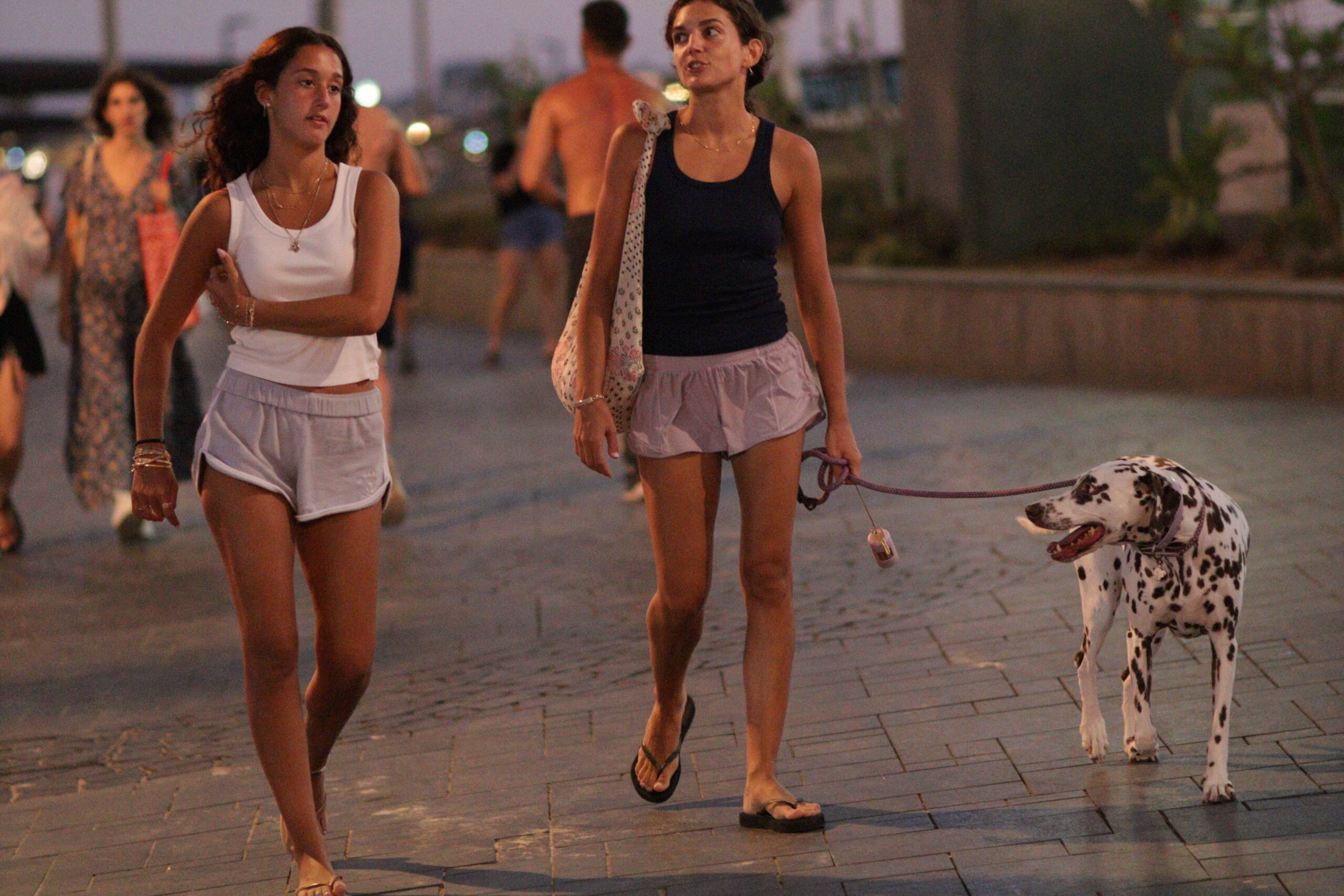There are evenings when the city refuses to behave like a city and instead transforms into a stage set—each passerby drafted unwillingly into a play no one rehearsed. The curtain here is dusk, violet light leaking into streetlamps that aren’t sure if they should bother turning on. Two women emerge into the spotlight: one slouching with the languid indifference of someone who’s already seen Act I too many times, the other mid-sentence, arms punctuating her speech as if she’s auditioning for the role of “Protagonist with Urgency.” Their costumes are minimalist: tank tops, shorts, flip-flops, chosen less for drama than for heat survival. Yet somehow, they read like a deliberate uniform—uniform of the late-summer flâneur, strolling nowhere but making it look like a destination.

And then comes the Dalmatian. Not a sidekick, not background detail, but the accidental star. Spots as crisp as ink stains, tongue dangling in theatrical exhaustion, it trots with that unmistakable sense of self that only a Dalmatian can muster. The leash is merely decorative—one gets the sense the dog has already decided the plotline and the humans are just supporting cast. In its gaze, there’s something Shakespearean, like it could pause, turn to the audience, and deliver a monologue about the absurdity of people walking endlessly in circles pretending it’s leisure.
Around them, extras wander in and out of frame. A shirtless man, bronzed by too much sun and too little fabric, struts as if auditioning for a cologne commercial that will never air. A woman in a flowing patterned dress lingers, trailing behind like a misplaced character from another story, holding a bag that looks like it carries secrets rather than groceries. Each face, half-lit, half-indifferent, is part of the accidental chorus that keeps the scene from dissolving into banality.
But it’s the little quirks that make this play believable. The plastic dog bag swinging from the leash like an absurd prop, the way flip-flops clap against stone tiles with offbeat percussion, the sweat-darkened strands of hair sticking to one girl’s temple. These are details you can’t stage, and they carry more weight than all the deliberate beauty shots of travel brochures. This isn’t tourism—it’s theatre of the ordinary, complete with improvisations, missed lines, and one canine actor who refuses to stay in the background.
I think what fascinates me most is the choreography of the street. Not the polished ballet of synchronized steps, but the clumsy, charming dance of mismatched gaits: one gliding, one stomping, one trotting with a spotted swagger. You could almost score it with jazz—those irregular beats, sudden pauses, little bursts of conversation that sound like saxophone riffs against the hum of the city.
If you squint, the promenade dissolves into something surreal. The concrete tiles become a stage floor, the neon blur in the distance a cheap lighting rig, the crowd an audience that doesn’t realize it’s watching. And in the middle of it all: two friends and their Dalmatian, walking not to get anywhere, but to remind us that the best theatre doesn’t need tickets. You just need to wander into the right street at the right hour and let life get a little absurd.
Leave a Reply